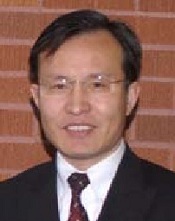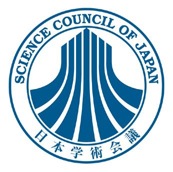TUTORIALS
Sunday, June 5, 2011 (AM)
SA-1. Cooperative Wireless Communications
- Lajos Hanzo- University of Southampton, UK
SA-2. Visible Light Communications
- Takaya Yamazato- Nagoya University, Japan
- Shin'ichiro Haruyama- Keio University, Japan
SA-3. Cognitive radio: a practical solution for Software-Defined Radio and Dynamic Spectrum Access complexity
- Sofie Pollin- IMEC, Belgium
- Michael Timmers- Alcatel-Lucent Bell Labs, Belgium
- Liesbet Van der Perre- IMEC, Belgium
SA-4. Next Generation Broadband Access: Passive Optical Networks
- Nirwan Ansari- New Jersey Institute of Technology, USA
Sunday, June 5, 2011 (PM)
SP-1. Networking the Data Center for Cloud Computing
- Sudipta Sengupta- Microsoft Research, USA
Canceled
SP-2. Evolution to 4G Wireless: LTE and EPC
- Vijay K. Varma- Telcordia Technologies Applied Research, USA
- Gregory P. Pollini- Telcordia Technologies Applied Research, USA
SP-3. Performance Issues in Wireless Mesh Networks
- Dharma P Agrawal- University of Cincinnati, USA
SP-4. Vehicular Networking
- Malathi Veeraraghava- University of Virginia, USA
Thursday, June 9, 2011 (AM)
TA-1. MIMO Detection for Emerging Wireless Standards: A Journey from High Level Algorithms to Low Level
Software/Hardware Defined Implementation
- Markku Juntti- University of Oulu, Finland
- Min Li- IMEC, Belgium
TA-2. Cooperative Relaying and its Application: From Analysis to Prototypes
- Stefan Valentin- Bell Laboratories, Alcatel-Lucent Deutschland AG, Germany
- Hermann S. Lichte- University of Paderborn, Germany
TA-3. Architectures for the Next Generation Internet and the Future Networks
- Raj Jain- Washington University in St. Louis, USA
TA-4. Wireless Without Batteries: Radio Communications with Low-Powered, Energy-Harvesting Integrated Circuits
- Gregory D. Durgin- Georgia Institute of Technology, USA
Thursday, June 9, 2011 (PM)
TP-1. Beyond IMT-advanced : The next ten years. Lajos Hanzo
received his first-class Master degree in electronics in 1976, his PhD in 1983 and his Doctor
of Sciences (DSc) degree in 2004. He is a Fellow of the Royal Academy of Engineering (FREng). He
co-authored 20 IEEE Press - John Wiley books totalling in excess of 10 000 pages on mobile radio communications,
published 945 research entries at IEEE Xplore, organised and chaired major IEEE conferences,
and has been awarded a number of distinctions. Lajos is also an IEEE Distinguished Lecturer and a Fellow
of both the IEE and IEEE. He is the Editor-in-Chief of the IEEE Press. He has in excess of 10 000 Harzing/
ScholarIndex citations. For further information on research in progress and associated publications please
refer to http://www-mobile.ecs.soton.ac.uk;
Takaya Yamazato
is a professor at the Institute of Liberal Arts and Sciences, Nagoya University, Japan. He
received the Ph.D. degree from Department of Electrical Engineering, Keio University, Yokohama, Japan, in 1993.
From 1993 to 1998, he was an Assistant Professor in the Department of Information Electronics, Nagoya University,
Japan. From 1997 to 1998, he was a visiting researcher of the Research Group for RF Communications, Department
of Electrical Engineering and Information Technology, University of Kaiserslautern. In 1998, he gave a 1/2 tutorial
entitled ``Introduction to CDMA ALOHA'' at Globecom held in Sydney Australia. Since then, he has been serving as
a TPC member of Globecom and ICC. In 2006, he received the IEEE Communication Society 2006 The Best Tutorial
Paper Award. He served as a co-chair of Wireless Communication Symposia of ICC2009 and he is a co-chair of
Selected Areas in Communication Symposia of ICC2011. From 2008 to 2010, he served as a chair of Satellite Space
and Communication Technical Committee. He is an editor in chief of Japanese Section of IEICE Transaction on
Communications. His research interests include visible light communication, satellite and mobile communication
systems, and ITS.
Shinichiro Haruyama
is a professor at The Graduate School of System Design and Management, Keio
University, Yokohama, Japan. He received an M.S. in engineering science from University of California at Berkeley
in 1983 and a Ph.D. in computer science from the University of Texas at Austin in 1990. He worked for Bell
Laboratories of AT&T and Lucent Technologies, U.S.A from 1991 to 1996, and for Sony Computer Science
Laboratories, Inc. from 1998 to 2002. He then joined Department of Information and Computer Science, Faculty of
Science and Technology, Keio University in 2002, and moved to a The Graduate School of System Design and
Management, Keio University in 2008. He is a chair of Visible Light Communication Consortium. He is a fellow of
IEICE. His research interests include visible light communication, wireless communication, system design automation,
and integrated circuit design.
Sofie Pollin
received a degree in electrical engineering in 2002 and a Ph.D. degree in 2006 (with honors) from
the Katholieke Universiteit Leuven, Belgium. Since October 2002 she has been a researcher at the Wireless
Research group of imec. In the summer of 2004 she was a visiting scholar at National Semiconductor, Santa
Clara, California. In the summer of 2005 she was a visitor at UC Berkeley. In 2006, she started as a postdoctoral
researcher at UC Berkeley working on coexistence issues in wireless communication networks. Since
2008, she is a senior researcher at imec working on cognitive radio and SDR solutions for wireless terminals.
Michael Timmers
received the M.Sc. degree in Electrical Engineering from the Katholieke Universiteit Leuven
in 2005 with a thesis on antenna development for 3G networks. In 2006, he joined imec to pursue a PhD degree
in Electrical Engineering, focusing on distributed optimization for Cognitive Radio Networks, which he attained
in 2009. In the summer of 2007, he was a visiting scholar at UC Berkeley. Currently, he is working as a senior
research engineer for Alcatel-Lucent Bell Labs on the development of the physical layer for next generation
DSL access networks.
Liesbet Van der Perre
received the M.Sc. degree in Electrical Engineering from the K.U.Leuven, Belgium,
in 1992. The research for her thesis was completed at the Ecole Nationale Superieure de Telecommunications
in Paris. She graduated summa cum laude with a PhD in electrical engineering form the same university in
1997. Liesbet earned an award from IBM in 1986, and she received a study-visit scholarship for study in the
United States from the Fina Maecenas Foundation. Her work in the past focused on radio propagation modeling,
system design and digital modems for high-speed wireless communications. She was a system architect in the
OFDM ASICs development at imec, which was nominated as one of the the IEEE International Solid State
Circuit Conference (ISSCC) 'Best of 50 Years' papers. Consequently, she was the project leader for the imec
low power Turbo codec. Currently, she is the scientific director of wireless research group in imec's, comprising teams of
researchers in the fields of digital baseband solutions, RF front-ends, cross-layer optimization, and ultra low power radios.
She's the program director of the Green Radio Program at imec, including the cognitive reconfigurable radio baseband and
analog programs. Also, she was a part-time professor at the University of Antwerp, Belgium, till 2004. She's an author and
co-author of over 200 scientific publications published in conference proceedings, journals, and books. She is a member of the
expert group of the 'eMobility' technology platform, which created a proposal for a Strategic Research Agenda for the 7FP.
Nirwan Ansari
is Professor of Electrical and Computer Engineering at NJIT. He authored Computational Intelligence for Optimization (1997) with E.S.H. Hou, and edited Neural Networks in Telecommunications (1994) with B. Yuhas. His research focuses on various aspects of broadband networks and multimedia communications. He has contributed over 350 technical papers, over one third published in widely cited refereed journals/magazines. He has guest-edited a number of special issues, covering various emerging topics in communications and networking. He is an IEEE Fellow, and was Visiting (Chair) Professor at several universities.
He was/is serving on the Editorial/Advisory Board of eight journals. He had/has been serving the IEEE in various capacities such as Chair of IEEE North Jersey Section, Member of IEEE Region 1 Board of Governors, Chair of IEEE COMSOC Networking TC Cluster, Chair of IEEE COMSOC Technical Committee on Ad Hoc and Sensor Networks, and Chair/TPC Chair of several conferences/symposia. Some of his recent recognitions include IEEE Leadership Award (2007, from Central Jersey/Princeton Section), the NJIT Excellence in Teaching in Outstanding Professional Development (2008), IEEE MGA Leadership Award (2008), the NCE Excellence in Teaching Award (2009), designation as an IEEE Communications Society Distinguished Lecturer (2006-2009, two terms), a couple of best paper awards, and an Thomas Edison Patent Award (2010).
Sudipta Sengupta is currently at Microsoft Research, where he is working on technologies that enable the next-generation Internet, including data center systems and networking, peer-to-peer applications, wireless networking, and flash memory for data center/cloud applications. Previously, he spent five years at Bell Laboratories, the R&D Division of Lucent Technologies, where he worked on Internet routing, optical switching, network security, wireless networks, and network coding. Before that, he was with Tellium, an optical networking pioneer, that grew from an early-stage startup to a public company during his tenure there.
Vijay K. Varma
is a Senior Scientist in the Wireless Systems Research Department of Telcordia, Red Bank, NJ. He has 25 years experience in wireless communications and has been involved in various systems issues, including speech coding, signaling and call control protocols, wireless data, mobility management protocols, and wireless network architectures. His current research interest includes wireless system architecture evolution, IP Multimedia Subsystems (IMS) enhancements, location-based services (LCS), and wireless priority services. He has published several papers in the area of wireless communications, given 14 tutorials, organized many workshops, and given and chaired panel sessions at various IEEE conferences. He attends 3GPP standards meetings relating to LTE, EPC, IMS, and Priority Services. He was the Technical Program Vice Chair for the IEEE WCNC conference in 2005 and is an associate editor for IEEE Vehicular Technology Magazine. Gregory P. Pollini
is a Senior Scientist with Telcordia Applied Research. He has over 15 years of experience in wireless communications spanning the areas of system performance evaluation, protocol specification, and implementation. He led an LTE industry requirements group for the NCS with 17 corporate participants to develop Next Generation Network (NGN) Government Emergency Telecommunications Service (GETS) services including voice, video, and data for National Security and Emergency Preparedness (NS/EP) community, and more recently has been involved in 3GPP RAN standardization of priority services. Previously, he led efforts in the development of CDMA optimization algorithms for the AutoRF product which received the 2005 CDG 3G CDMA Industry Achievement Award for Network Technology Innovation. He has been a consultant for various service providers on the coverage, capacity, and application level testing of GSM, cdma2000, EvDO, UMTS, and HSDPA systems. Prior to joining Bellcore, he was an independent consultant for AT&T Bell Labs, Holmdel, NJ where he worked on MAC protocol performance, location tracking/paging strategies for PCS, and call admission for mixed services over Variable Spreading Gain and Multi-Code CDMA. He received the Ph.D. degree from Rutgers University Wireless Information Network Laboratory (WINLAB) where his research covered several topics related to the design and hardware implementation of MAC layer protocols for wireless systems, and wireless network control and performance. Dr Pollini has published over 30 papers on cellular communication system design and performance evaluation, has given several tutorial presentations on LTE and has chaired panels at vaious IEEE conferences.
Dharma P Agrawal
was on sabbatical leave at the CMU during 2006-2007. His current research interests include resource allocation and security in mesh networks, efficient deployment and security in sensor networks, use of Femto cells, and heterogeneous wireless. At UC, he has led implementation of 26 nodes Wireless Mesh Network in 8th floor of 3 Engineering buildings. He has co-authored a textbook entitled Introduction to Wireless and Mobile Systems, third edition, and Ad hoc and Sensor Networks- Theory and Applications. He has been the Program Chair and General Chair for numerous international conferences and meetings. He was awarded a "Third Millennium Medal," by the IEEE for his outstanding contributions. He has published over 580 papers, delivered keynote speech for 22 international conferences, and given 29 different tutorials and extensive training courses in various in the areas of Ad hoc and Sensor and Mesh Networks, including security issues. He has graduated 59 PhDs and 45 MS students. He has been named as an ISI Highly Cited Researcher and has been recently awarded IEEE CS Harry Goode Award. He is a Fellow of the IEEE, the ACM, the AAAS and the World Innovation Foundation.
Malathi Veeraraghava
is a Professor in the Department of Electrical & Computer
Engineering at the University of Virginia (UVa). She teaches courses on data
networks, Internet engineering, wireless networks, statistics and performance
analysis. She received her PhD degree from Duke University, Durham, NC, in
1988, and joined Bell Laboratories. Here, she was awarded the Distinguished
Member of Technical Staff honor for her research. In 1999, she joined the faculty
at Polytechnic University, Brooklyn, New York. She won the Polytechnic
University Jacobs award for excellence in education in 2002. Recently, in
collaboration with the Civil Engineering department at UVa, she was awarded a
US DOT grant to study the use of wireless (DSRC) technologies for Freeway
Merge applications. She holds twenty-nine patents, has over 90 publications, and
has received five Best-paper awards. She served as the Technical Program
Committee Chair for IEEE ICC 2002, and Associate Editor for the IEEE/ACM
Transactions on Networking. She also served as Editor of IEEE ComSoc e-News.
Her teaching evaluations from students are excellent; e.g., a Fall 2009 student
wrote "The best Professor at UVA I have ever had so far. By the way, I am a 4th
year student."
Markku Juntti
received Dr.Sc. (Tech.) degrees in Electrical Engineering from
University of Oulu, Oulu, Finland in 1997, respectively. Dr. Juntti has been a
Professor of Telecommunications at University of Oulu since 2000. He is also
Adjunct Processor at Department of Electrical and Computer Engineering, Rice
University, Houston, Texas. In 1999.2000 he was with Nokia Networks. His
research interests include communication and information theory, signal processing
for wireless communication systems as well as their application in wireless
communication system design. He is an author or co-author in some 260 papers
published in international journals and conference records as well as in book
WCDMA for UMTS published by Wiley. He has given tutorial presentations on
CDMA system and receiver design in several international conferences, including
among others ICC 2001, EUSIPCO 2000 and VTC'99 Fall. He has also given
tutorials on MIMO communications in Nordic Radio Symposium (NRS 2004) and
PIMRC 2005. Dr. Juntti is a Senior Member of IEEE, was an Associate Editor for
IEEE Transactions on Vehicular Technology in 2002.2008, and is an Editor of
IEEE Transactions on Communications. He has been TPC Secretary ICC 2001, and
TPC Co.Chair of NRS 2004 and PIMRC 2006. He is the General Chair of 2011
IEEE Communication Theory Workshop (CTW 2011).
Min Li
received B.E. degree with the highest honor from Zhejiang University(Hangzhou, China) and Ph.D degree in
Electrical Engineering from K.U.Leuven,
(Leuven, Belgium), with his Ph,D work performed at IMEC. He was a visiting
scholar at University of Illinois at Urvana-Champaign, Microsoft Research Asia and
Lucent Bell Labs Research china. He is currently a senior researcher at IMEC, and
his research focuses on bridging the gap between advanced algorithmic research and
industrial strength implementations. He received the IEEE SIPS best paper award in
2007 and the Texas Instrument signal processing award in 2008. His research
interest is algorithe-architecture co-optimization for low power signal processing.
He has been serving the TPC of ICC 2010 and ICC 2011.
Stefan Valentin
studied communication technology and electrical engineering at the
TU Berlin. Since 2005 he served as a research and teaching associate at the University
of Paderborn (Germany). During this time, he was invited lecturer at the
International Centre of Theoretical Physics (Trieste, Italy) and invited scientist at
the Carleton University (Ottawa, Canada). In 2010, he received his PhD in Computer
Science with "summa cum laude" from the University of Paderborn and joined
the Alcatel-Lucent Bell Labs in Stuttgart, Germany.
Hermann S. Lichte
studied computer science and electrical engineering at the University
of Paderborn. During his studies he designed embedded real-time operating
systems. Since 2007 he is PhD candidate at the University of Paderborn (Germany)
where he studies the gains of cooperative relaying in multi-hop wireless networks. Raj Jain
is a Fellow of IEEE, a Fellow of ACM, a winner of ACM SIGCOMM Test of
Time award, CDAC-ACCS Foundation Award 2009, and ranks among the top 50 in
Citeseer's list of Most Cited Authors in Computer Science. Dr. Jain is currently a
Professor of Computer Science and Engineering at Washington University in St. Louis.
Previously, he was one of the Co-founders of Nayna Networks, Inc - a next generation
telecommunications systems company in San Jose, CA. He was a Senior Consulting
Engineer at Digital Equipment Corporation in Littleton, Mass and then a professor of
Computer and Information Sciences at Ohio State University in Columbus, Ohio.
Gregory D. Durgin
joined the faculty of Georgia Tech's School of Electrical and Computer Engineering in Fall 2003 where he now serves as associate professor of electromagnetics. He received the BSEE (96), MSEE (98), and PhD (00) degrees from Virginia Polytechnic Institute and State University. In 2001 he was awarded the Japanese Society for the Promotion of Science (JSPS) Post-doctoral Fellowship and spent one year as a visiting researcher with Morinaga Laboratory at Osaka University. In 1998 he received the Stephen O. Rice prize (with coauthors Theodore S. Rappaport and Hao Xu) for best original journal article in the IEEE Transactions on Communications. Prof. Durgin also authored Space-Time Wireless Channels, the first textbook in the field of space-time channel modeling. Prof. Durgin founded the Propagation Group (http://www.propagation.gatech.edu) at Georgia Tech, a research group that studies radiolocation, channel sounding, backscatter radio, RFID, and applied electromagnetics. He is a frequent consultant to industry, having advised more than 12 multinational corporations on wireless technology. He is a winner of the National Science Foundation CAREER award as well as numerous teaching awards, including the Class of 1940 Howard Ector Outstanding Classroom Teacher Award at Georgia Tech (2007).
Najah Abu Ali
received her B.S. and M.S. degrees in Electrical Engineering from University of Jordan, Amman,
Jordan and her PhD degree in 2006 in Computer Networks in Electrical Engineering department at Queen's
University, Kingston, Canada. She joined the College of Information Technology, United Arab Emirates University
(Al Ain, UAE), as an Associat Professor with the Computer Networks Engineering track. She had a postdoctoral
fellowship at the School of Computing, Queen's University from January 2006 to August 2006. Her research
interests comprise wired and wireless communication networks. Specifically, analytical and measurement based
network performance management and Quality of Service and resource management of single and multihop wireless
networks. Dr. Abu Ali is an expert on Broadband Wireless Networks architecture, design, QoS provisioning and
performance and has published extensively in the area. She delivered several tutorials before including one on
Resource Management in WiMax Networks at ICC 2008, an overview of IEEE 802.16/WiMAX at CCNC 2009, and
two on IMT-Advanced standardization and technologies, presented in Globecom 2009 and VTC-Fall 2010.
Abd-Elhamid M. Taha
received his B.Sc. and M.Sc. in Electrical Engineering from Kuwait University, Kuwait in
1999 and 2002, and his Ph.D. from the Department of Electrical and Computer Engineering of Queen's University,
Canada in September 2007. He is currently a Research Associate at the School of Computing, Queen's University.
Dr. Taha has authored several publications including journals, refereed conference papers, and book chapters. He
also served as a technical program committee in several international conferences and symposia, and is the co-chair
of the 2010 IEEE Workshop on Wireless Local Networks. His areas of interest include radio resource management
in wireless and mobile networks, especially in the context of wireless overlays with heterogeneous access and
wireless relay networks. Dr. Taha has presented two tutorials before at flagship IEEE conferences including IEEE
GCC 2009, Globecom 2009 and VTC 2010. He is currently a member of both the IEEE and the ACM.
Hossam Hassanein
is with the School of Computing at Queen's University working in the areas of broadband,
wireless and variable topology networks architecture, protocols, control and performance evaluation. Dr. Hassanein
obtained his Ph.D. in Computing Science from the University of Alberta in 1990. He is the founder and director of
the Telecommunication Research (TR) Lab http://www.cs.queensu.ca/~trl in the School of Computing at Queen's.
Dr. Hassanein has more than 350 publications in reputable journals, conferences and workshops in the areas of
computer networks and performance evaluation. He has delivered several plenary talks and tutorials at key
international venues, including Unconventional Computing 2007, IEEE ICC 2008, IEEE CCNC 2009, IEEE GCC
2009, IEEE GIIS 2009, ASM MSWIM 2009 and IEEE Globecom 2009. Dr. Hassanein has organized and served on
the program committee of numerous international conferences and workshops. He also serves on the editorial board
of a number of International Journals. He is a senior member of the IEEE, and is currently chair of the IEEE
Communication Society Technical Committee on Ad hoc and Sensor Networks (TC AHSN). Dr. Hassanein is the
recipient of Communications and Information Technology Ontario (CITO) Champions of Innovation Research
award in 2003. He received several best paper awards, including at IEEE Wireless Communications and Network
(2007), IEEE Global Communication Conference (2007), IEEE International Symposium on Computers and
Communications (2009), IEEE Local Computer Networks Conference (2009) and ACM Wireless Communication
and Mobile Computing (2010). Dr. Hassanein is an IEEE Communications Society Distinguished Lecturer
Friedrich K. Jondral
received a Diploma in mathematics and a Doctoral degree in natural sciences (Dr.rer.nat.) from the Technische Universit?t Braunschweig (Germany) in 1975 and 1979, respectively. During the winter semester 1977/78 he was a visiting researcher to the Department of Mathematics, Nagoya University (Japan). From 1979 to 1992 Dr. Jondral was an employee of AEG-Telefunken (now EADS), Ulm (Germany), where he held various positions in research, development and management. During this period he also lectured on mathematics at the Universit?t Ulm where he was appointed Adjunct Professor in 1991. Since 1993 Dr. Jondral has been Full Professor and Director of the Communications Engineering Lab at the Karlsruhe Institute of Technology. Here, from 2000 to 2002, he served as the Dean of the Department of Electrical Engineering and Information Technology. During the summer semester 2004, Dr. Jondral was a visiting faculty to the Mobile and Portable Radio Research Group (MPRG) at Virginia Tech (Blacksburg, VA). His current research interests are in the fields of ultra wideband communications, software defined and cognitive radio, signal analysis, pattern recognition, network capacity optimization and dynamic spectrum allocation. Dr. Jondral authored or co-authored about 250 technical papers and four books. He acted as Technical Program Chair or Co-Chair for several international conferences and is an associate editor of the IEEE Communications Letters as well as of the Frequenz.
Alexander M. Wyglinski
is an Assistant Professor of Electrical and Computer Engineering at Worcester Polytechnic Institute (WPI), Director of the Wireless Innovation Laboratory (WI Lab), and Director of the WPI Limerick (Ireland) Project Center. He received his Ph.D. degree from McGill University in 2005, his M.Sc.(Eng.) degree from Queens University at Kingston in 2000, and his B.Eng. degree from McGill University in 1999, all in electrical engineering. Professor Wyglinski is very actively involved in the wireless communications research community, currently serving on the editorial boards of both IEEE Communications Magazine and IEEE Communications Surveys and Tutorials, in addition to having served as a guest co-editor for two IEEE Communications Magazine feature topics on cognitive radio (May 2007, April 2008), as well as a technical program committee co-chair of the Second International Conference on Cognitive Radio Oriented Wireless Networks and Communications (CrownCom 2007). Professor Wyglinski is a co-author of an edited textbook, entitled: Cognitive Radio Communications and Networks: Principles and Practice, which has been published by Academic Press in December 2009. Professor Wyglinski is a member of the IEEE, IEEE Communications Society, IEEE Signal Processing Society, IEEE Vehicular Technology Society, IEEE Women in Engineering, Sigma Xi, and Eta Kappa Nu. His current research interests are in the areas of wireless communications, wireless networks, cognitive radios, software-defined radios, transceiver optimization algorithms, dynamic spectrum access networks, spectrum sensing techniques, machine learning techniques for communication systems, and signal processing techniques for digital communications.
Kenichi Kitayama
received the B.E., M.E., and Dr.Eng.
degrees in communication engineering from Osaka
University, Osaka, Japan, in 1974, 1976, and 1981,
respectively. In 1976, he joined the NTT Laboratory. From
1982 to 1983, he was a Research Fellow at University of
California, Berkeley. In 1995, he joined the
Communications Research Laboratory (currently, NICT),
Tokyo, Japan. Since 1999, he has been the Professor with
the Department of Electrical, Electronic and Information
Engineering, Graduate School of Engineering, Osaka
University, Japan. His research interests are in photonic
label switchings, optical signal processings, optical code-division-multiple access
systems, and radio-over-fiber communications. He has published over 250 papers in
refereed journals, written two book chapters, and translated one book. He holds more
than 30 patents. He currently serves on the Editorial Boards of the IEEE/OSA J.
Lightwave Technol, OSA/IEEE J. Optical Communications and Networking, Optical
Switching and Networking as the Associate Editor. He is serving as the Vice President
of the Inst. Electronics, Information and Communication Engineers (IEICE), Japan. He
is the Fellow of the IEEE and the Fellow of the IEICE. For more details,
http://wwwpn.comm.eng.osaka-u.ac.jp/eindex.html.
Zhensheng Zhang
received his Ph.D. in electrical engineering from the
University of California, Los Angeles in 1989. Dr. Zhang has over twenty
years experience in design and analysis of network architecture, protocols
and control algorithms, with very strong backgrounds in performance
analysis, modeling and simulation of the communication networks. He is
currently with Argon ST (formerly SDRC), Principal Scientist, Networking
Research, serving as Principal Investigator for several DOD projects. He
worked at Bell Laboratories, Lucent Technologies, focusing on research and
development in wireless networks. Dr. Zhang severed as Editor of IEEE Transaction on
Wireless Communications from 2002 to 2006. He served the General Chair of Broadband
Wireless Networking Symposium, October 2004. He has served as Guest Editor for the IEEE
JSAC special issue on Overlay Networks, 2003 and the Journal of Wireless Networks issue
on multimedia wireless networks, August 1996. Dr. Zhang served as Chair of IEEE
Communication Society, San Diego section, 2004-2010. His research interests include
wireless ad hoc networks, wireless sensor networks. He has given many invited talks and
tutorials on wireless ad hoc networks at various conferences. Ruhai Wang
received his Ph.D. degree in Electrical Engineering from
New Mexico State University, USA, in 2001. He is currently an associate
professor in Phillip M. Drayer Department of Electrical Engineering at
Lamar University, Texas. His research interests include delay/disruption
tolerant networking (DTN), space/interplanetary Internet, satellite and space
communications. He has published more than sixty articles in international
journals/magazines and conferences proceedings with most of them on space Internet. Dr.
Wang frequently serves as a TPC chair/co-chair for international conferences/workshops,
such as ICC 2007 and IWSSC 2008. He serves as an associate editor and a guest editor for a
number of international journals/magazines such as John Wiley's Wireless Communications
and Mobile Computing (WCMC) Journal, Wiley's Journal of Security and Communication
Networks, and IEEE Aerospace & Electronics Systems Magazine. Dr. Wang served as the
Vice Chair and Chair of IEEE Beaumont Section in 2008, 2009 and 2010.
- Najah Abu Ali- UAE University, United Arab Emirates
- Abd-Elhamid M. Taha- Queen's University, Canada
- Hossam S. Hassanein- Queen's University, Canada
TP-2. From Maxwell's Equations to Overlay Systems:How Cognitive Radios Will Change Communications
- Friedrich K. Jondral- Karlsruhe Institute of Technology, Germany
- Alexander M. Wyglinski- Worcester Polytechnic Institute, USA
TP-3. Rationale of OCDMA for NG-PON: 10Gbps bandwidth-symmetric, long-reach, and high-security
- Ken'ichi Kitayama- Osaka University, Japan
TP-4. Disruption/Delay Tolerant Mobile Tactical Ad Hoc Networks:Overview and Challenges
- Zhensheng Zhang- Argon ST, Inc, USA
- Ruhai Wang- Lamar University, USA
Abstract
In the early days of wireless communications the research community used to view multipath-induced dispersion as an
undesirable propagation phenomenon, which could only be combatted with the aid of complex channel equalizers. The
longer the Channel Impulse Response (CIR) was, the more complex the channel equalizer became. However, provided that
the complexity of a sufficiently high-memory channel equalizer was affordable, the receiver could benefit from the fact that
the individual propagation paths faded independently. To leaborate a little further, even if one of the paths was experiencing
a high attenuation, there was a good chance that some of the other paths were not, which led to a potential diversity gain.
However, if the channel does not exhibit several independently fading paths, techniques of artificially inducing diversity
may have to be sought. A simple option is to employ a higher direct-sequence spreading factor, which results in a higher
number of resolvable multipath components and hence in an increased diversity gain. Naturally, this is only possible if
either the available bandwidth may be extended according to the spreading factor or the achievable bitrate is reduced by the
same factor. A whole host of classic diversity combining techniques may be invoked then for recovering the original signal.
An alternative technique of providing multiple independently faded replicas of the transmitted signal is to employ relaying,
distributed space-time coding or some other cooperation-aided procedure, which is the subject of this course. One
could also view the benefits of decode-and-forward based relaying as receiving and then flawlessly regenerating and retransmitting
the original transmitted signal froma relay - provided of course that the relay succeeded in error-freely detecting
the original transmitted signal.
This course reviews the current state-of-the-art and proposes a number of novel relaying and cooperation techniques.
An important related issue is the availability or the absence accurate channel information, which leads to the concept of
coherent versus non-coherent detection at the realys and at the destination. Similarly, the related initial synchronization
issues also have to be considered.
Naturally, when using hard-decisions in the transmission chain, we discard valuable soft-information, which results in
an eroded performance, albeit also reduces the complexity imposed. Hence the hard- versus soft-decoding performance
trade-off will also be explored in the course, along with the benefits of interleaved random space-time coding invoked for
multi-source cooperation.

Abstract
Visible light communications (VLC) is the latest optical wireless communications technologies that uses
low-power light emitting diodes, or LEDs, not only to provide light but also to broadcast data. LEDs are extremely
energy-efficient and predicted to become widespread in general lighting application. It is expected that LED market
will reach $29 billion in 2017 that is comparable to today's NAND and DRAM markets [1]. Because LED is a
solid-state lighting device, it can be modulated at high-speed compared with other lighting sources. VLC uses LEDs,
which send data by flashing light at speeds undetectable to the human eye.
The pioneer of VLC using LEDs is Professor Masao Nakagawa of Keio University. His first paper on this
subject appeared in the early 2000, together with his successor Prof. Shinichiro Haruyama, the instructor of this
tutorial. Later in 2003, he formed Visible Light Communication Consortium (VLCC). Now VLCC is lead by Prof.
Haruyama. Please see the following video, an interview of Prof. Haruyama about VLC, which has been broadcast
by NHK World in June 4, 2009. http://www.naka-lab.jp/movie/nhk_world.wmv
So far various experimental VLC systems and prototypes are demonstrated. Such includes 4.8kbps visible light
ID as an infrastructure to mobile-terminal application, independent sound transmission through RGB visible lights and
100Mbps VLC wireless LAN system. Using LED array, the data rate of 1 Gbps achieved by Keio University (Prof.
Haruyama) that is the fastest at the moment [1]. In terms of longer range, there has been a demonstration by VLCC
that achieved 1kbps transmission of the distance 2km, that is the world's longest distance for VLC. Samsung and
ETRI are also active in developing VLC applications. They have demonstrated 120Mbps full duplex
mobile-to-mobile transmission and 100Mbps signboard transmission. Please see the following video of Nakagawa lab.
http://www.youtube.com/watch?v=QEh5f49LsB4
Widespread use of LEDs in traffic applications and growing interest in Intelligent Transport System (ITS) presents
an opportunity for VLC. Data transmission using LED traffic lights, LED road illumination, and LED brake lights are
typical application. Dr. Yamazato, the instructor of this tutorial, is a leader in VLC application to ITS and he recently
achieved 16kbps data transmission and distance up to 70m in a driving situation with a vehicle moving with 30km/h.
Today VLC using LED is a hot topic and VLC projects have been initiated in Europe and US. In 2006 Siemens
launched VLC project. Later in 2008, European Commission established OMEGA project with a consortium of 20
European partners from industry and the scientific community [3]. Meanwhile, in 2008, the US National Science
Foundation has approved a grant of $18.5 million to help establish and the Engineering Research Center focuses on
VLC. The members of the Center include the Rensselaer Polytechnic Institute in New York, Boston University and
the University of New Mexico. The University of California also have launched five-year research project called the
Ubiquitous Communication by Light (UC-Light) that is founded with $3.5 million from the University. The project is
anticipated to begin in 2009 and run for five years.
VLC is in the process of standardization by the IEEE 802.15 TG7 and VLCC as well as other standard
organizations. The first VLC specification standard was released from JEITA in conjunction with VLCC in 2007.
Later in 2008, VLCC released their first specification standard adopting and expanding the IrDA physical layer. IrDA
transceiver transmission wavelength (IrDA physical layer) is expanded to accommodate the visible light wavelength.
By adapting this specification, the existing IrDA optical modules can be used for VLCC data transmission with slight
modification. In January 2009, IEEE 802.15 (Wireless Personal Area Networks) Task Group 7 (Visible Light
Communication) has been launched. At the 6th meeting held in November 2009 they adopted the baseline draft text
for the development of the 802.15.7 standard.
The goal of this tutorial is to introduce current VLC technology and its trends. Starting with an overview of VLC,
participants will learn basics of VLC, on-going standardization activities and VLC. We will provide some
experimental results and furthermore detail to enhance VLC application.


Abstract
Anything, anytime, anywhere! The holy grail of wireless communication is coming closer. However, significant hurdles still
need to be taken. Indeed, Anytime would require the systems to have an infinite amount of energy resources, so as to guarantee
an endless operation. Further, Anything implies that the Quality of Service (QoS) guarantees are as tough as they are diverse.
Finally, Anywhere would require the systems to be able to operate effectively in a broad range of heterogeneous environments.
As the wireless environment is extremely dynamic, the AAA paradigm can only be realized with extremely flexible radios.
This is true both for hardware development and spectrum sharing, where novel flexible paradigms have been developed: the
Software-Defined Radio (SDR) and Dynamic Spectrum Access (DSA).
This tutorial starts with the introduction of SDR and DSA technologies. The tutorial then discusses the similarities between
the SDR and DSA challenges and explains why the Cognitive Radio (CR) concept can be seen as a generic solution to handle
the inherent flexibility of these novel paradigms. While this run-time flexibility has been the ultimate goal to exploit the wireless
environment dynamics, we show that achieving a practical CR, which can exploit the flexibility efficiently at run-time is very
challenging.
We then present a generic framework that provides an efficient run-time solution, while maintaining the core CR concepts.
The proposed framework is then instantiated in a number of use cases to illustrate the possible practical design of CR solutions.
Although the concepts of DSA and SDR have been around for quite some time, only very limited implementations can be
found today. The main reason is the lack of a practical design framework for SDR and DSA. This tutorial is hence very timely
since it introduces a practical and generic design framework based on the CR concepts that can be instantiated for both SDR
and DSA. We believe that this framework provides researchers and designers a fresh view, and can trigger a range of new yet
implementation-relevant research.
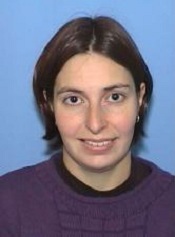
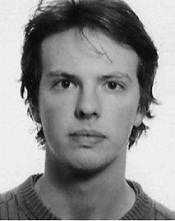

Abstract
With the recent development of optical fiber technologies, a dramatic increase in bandwidth has been facilitated in the backbone network through the penetration of wavelength-division multiplexing (WDM) technology, which provides tens of Gbps per wavelength. At the same time, local area networks (LANs) have been scaled up from 10Mbps to 100 Mbps and are being upgraded to Gigabit Ethernet speeds. However, the access network in between only runs at low Mbps or even Kbps bandwidth speeds. As an inexpensive and scalable solution to the bottleneck problem of broadband access, passive optical networks address the last mile of the communications infrastructure between the service provider's central office (CO) and customer sites. The tutorial provides an overview on various existing access networks, and an in-depth survey/exposition on the evolution of passive optical networks for broadband access, ranging from APON, BPON, EPON, GPON, GEPON, as well as the future PON systems such as 10G-EPON, NG-PON, WDM PON, and OFDM-PON. It will also discuss various research issues in PONs, such as resource allocation, energy-efficient PONs, and integration of PON and wireless access. This tutorial will provide latest updates on PON based access networks.
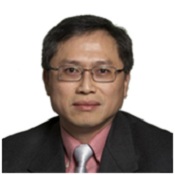
SP-1 Tutorial Title: Networking the Data Center for Cloud Computing
Abstract
Large scale data centers are enabling the new era of Internet cloud computing. The computing platform in such data centers consists of low-cost commodity servers that, in large numbers and with software support, match the performance and reliability of expensive enterprise-class servers of yesterday, at a fraction of the cost. The network interconnect within the data center, however, has not seen the same scale of commoditization or dropping price points. Today's data centers use expensive enterprise-class networking equipment and associated best-practices that were not designed for the requirements of Internet-scale data center services -- they severely limit server-to-server network capacity, create fragmented pools of servers that do not allow any service to run on any server, and have poor reliability and utilization. The commoditization and redesign of data center networks to meet cloud computing requirements is the next frontier of innovation in the data center.
Recent research in data center networks addresses many of these aspects involving both scale and commoditization. By creating large flat Layer 2 networks, data centers can provide the view of a flat unfragmented pool of servers to hosted services. By using traffic engineering methods (based on both oblivious and adaptive routing techniques) on specialized network topologies, the data center network can handle arbitrary and rapidly changing communication patterns between servers. By making data centers modular for incremental growth, the up-front investment in infrastructure can be reduced, thus increasing their economic feasibility. This is an exciting time to work in the data center networking area, as the industry is on the cusp of big changes, driven by the need to run Internet-scale services, enabled by the availability of low-cost commodity switches/routers, and fostered by creative and novel architectural innovations.
What the Tutorial will cover: We will begin with an introduction to data centers for Internet/cloud services. We will survey several next-generation data center network designs that meet the criteria of allowing any service to run on any server in a flat unfragmented pool of servers and providing bandwidth guarantees for arbitrary communication patterns among servers (limited only by server line card rates). These span efforts from academia and industry research labs, including VL2, Portland, SEATTLE, Hedera, and BCube, and ongoing standardization activities like IEEE Data Center Ethernet (DCE) and IEEE TRILL. We will also cover other emerging aspects of data center networking like energy proportionality for greener data center networks.
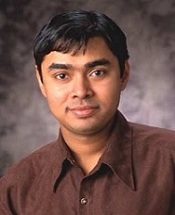
Dr. Sengupta received a Ph.D. and an M.S. in EECS from Massachusetts Institute of Technology (MIT), USA, and a B.Tech. in Computer Science from Indian Institute of Technology (IIT), Kanpur, India. He was awarded the President of India Gold Medal at IIT-Kanpur for graduating at the top of his class across all disciplines. Dr. Sengupta has published 65+ research papers in some of the top conferences, journals, and technical magazines. He has authored 40+ patents (granted or pending) in the area of computer systems and networking.
Dr. Sengupta won the IEEE Communications Society Leonard G. Abraham Prize for 2008 for his work on oblivious routing of Internet traffic. At Bell Labs, he received the President's Teamwork Achievement Award for technology transfer of research into Lucent products. His work on peer-to-peer based distribution of real-time layered video received the IEEE ICME 2009 Best Paper Award.
Abstract
The trend towards All-IP networks and the increased demand for multimedia services prompted the wireless industry to assess the need for a long-term evolution of the radio-access technology and an optimization of the packet core network. Research, standardization and development activities in these areas resulted in Evolved UTRAN (E-UTRAN) a.k.a. Long Term Evolution (LTE), and the Evolved Packet Core (EPC) becoming the most dominant technologies in the race for 4G wireless. LTE network deployments have started in earnest and predictions for LTE and EPC deployment around the world in the next few years are staggering. This tutorial will address the vision for 4G wireless and how LTE and EPC fulfill this vision,
Starting with a brief overview of GSM/UMTS/HSPA technologies that are serving over 4 billion wireless users worldwide, we will address the drivers and objectives for long term evolution and optimization of a packet core network. This will be followed by a discussion of the architectural details of EPC capable of supporting not only LTE and legacy 3GPP radio access technologies, but also other radio access such as eHRPD (EvDO), WLAN, and WiMAX. We will continue with a discussion of the LTE architecture and design to meet the demands of low latency and high speed connections. We will introduce the OFDMA physical layer and the key protocol layers over the air interface, and then discuss the S1 and X2 Interfaces within the LTE, including the S1 and X2 Application Protocols, and a presentation of the continued and changing role of the GTP. This will be followed by the EPC design that enables QoS support for real-time services and seamless mobility within and across multiple radio access networks. We will conclude the presentation with a status of the evolution of LTE (LTE-Advanced) as well as deployment status and market projections for these technologies.
The topics covered in the tutorial are extremely timely as 4G wireless is moving from vision to reality. 4G wireless promises to offer broadband access and provide a true platform for network convergence. LTE deployments have started in Europe and in the US and Verizon plans to deploy LTE in 30 markets this year and the entire US in the next couple of years.
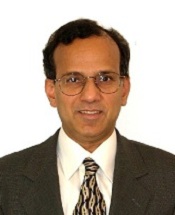
Dr. Varma received the M.Tech. degree from the Indian Institute of Technology, Kanpur, and the Ph.D. degree from Southern Methodist University, Dallas, TX, both in Electrical Engineering. He is a Senior Member of the IEEE. He received the Frederick E. Terman award in 1985.

Abstract
Mesh networks have become increasingly important because they can be easily implemented without much infrastructure and can support adequate bandwidth with a flexible multi-hop wireless communication among their routers serving the clients. Besides broadband internet connectivity, WMN envision a numerous applications such as building automation, VoIP over wireless, video delivery, home networking etc.
This tutorial provides an overview of the Wireless Mesh Networks (WMNs) and identifies various associated characteristics. We present the evolution of mesh technology and also describe the IEEE 802.11s standard that formalizes the physical and MAC layer of WMN. We systematically analyze the key challenges in each layer of the network and discuss feasible state-of-the-art protocols. We provide a broad insight into many open research issues such as radio resource management, multipath route determination protocol, queue management policy to ensure fairness of multihop flows, etc. As WMNs are envisioned for supporting high bandwidth applications with minimum investment costs, it is important to develop a guideline for designing and deploying a WMN. We address in this tutorial some fundamental design issues such as optimal number of MRs and IGWs and an optimal placement strategy to maximize the network capacity. Further, we analyze important channel assignment strategies to be followed during deployment of a WMN that maximally utilizes the network resources such as radio interfaces, channel. We also address other issues such as load balancing among MRs to avoid congestion near the IGW and ensure a scalable operation. Finally, we outline various security challenges that are impeding the rapid deployment of mesh networks.
We also cover key results from out research and other active researchers that address the above research issues in WMNs. We also identify useful research directions which can catalyze new research efforts. Future widespread deployment of the WMN seems quite promising, even though several design issues still remain real bottlenecks. After attending this tutorial, attendees will have a clear understanding of the mesh technology, the various security issues pertinent to mesh networks and some elegant solutions to deal them.

Abstract
Automobiles will be an important part of the next-generation Internet, which is often
described as an "Internet of Things," i.e., an interconnection of cyber-physical systems.
Automobiles are expected to communicate with each other within Vehicular Adhoc
Networks (VANETs), as well as to devices/computers on the Internet. In the US, the FCC
granted a 75 MHz band in the 5.9 GHz range for Dedicated Short Range
Communications (DSRC) in Intelligent Transportation Systems (ITS). Allocations for the
DSRC band in Japan and Europe are in the 5.8 GHz range. This band is expected to be
used primarily for safety applications, but also for mobility (improve efficiency and cut
greenhouse gas emissions) and commercial applications, such as toll collection. Low
latency is a key requirement for safety applications such as accident prevention. The
IntelliDriveSM program is a major US initiative sponsored by the US Department of
Transportation. Formerly this program was called Vehicle Infrastructure Integration
(VII). In Japan, the Ministry of Land, Infrastructure and Transport (MLIT) is advancing
the ITS agenda through projects such as Smartway. The ERTICO and Car2Car
consortiums in Europe coordinate efforts between private sector and governmental
agencies. In Sept. 2009, Toyota announced plans to offer a DSRC unit in a new vehicle
model for the Japan market. Several trials have been conducted in various countries, such
as the Proof of Concept (POC) trials in mid-2008 and the trials run by the National
Center for Atmospheric Research (NCAR) in April 2009. The combined set of activities
by the private sector and government agencies makes this tutorial timely.
The tutorial will start with the Wireless Access in Vehicular Environments (WAVE)
architecture, which consists of On-Board Units (OBUs) and Road-Side Units (RSUs),
and WAVE protocols (IEEE 802.11p: physical and MAC layers, and IEEE1609.1-1609.4:
resource management, security services, network/transport protocols, and multichannel
operation). The J2735 standard developed by the Society of Automotive Engineers (SAE)
will also be reviewed. It details the different type of messages to be used by vehicular
OBUs and RSUs, such as vehicle probe data messages that report sensor data (e.g., brake
status, wiper status). Security and privacy issues are considered in depth. As previous
attendees of ICC tutorials have requested an increased practical orientation in the
feedback forms, this tutorial includes a comprehensive review of equipment (OBUs,
RSUs, etc.) available in the marketplace. Also included is a thorough coverage of testbeds
and trials. Detailed information has been made available by the US DOT on the proof-ofconcept
trials in Michigan, New York and California. This is presented in depth to
provide attendees an appreciation for the practical aspects of vehicular networking. In
addition, trials in Germany, France, Norway, Sweden, and in Japan, i.e., AHS, ASV and
DSSS projects, will be reviewed. Finally, recognizing that much of the research literature
in vehicular networking has focused on new routing algorithms for VANETs, and more
generally for mobile adhoc networks (MANETs), work from more than 50 research
publications is surveyed and key findings summarized. In addition to routing protocols,
distributed algorithms for location determination and data collection (speed, acceleration,
location) have been proposed, and there is a rich literature reporting on simulation studies
of various vehicular scenarios and applications. Channel models, mobility models and
data communications models used in these papers will be reviewed briefly. In summary,
the goal of the tutorial is to provide attendees a broad understanding of vehicular
networking, covering both practical aspects and fundamental research contributions.

Abstract
MIMO is a crucial component of all emerging high throughput wireless standards,
such as LTE, LTE-A, 802.11n, 802.11ac and 802.16e. In these standards, large
MIMO systems are defined to deliver the desired spectral efficiency. For instance,
various 8x8 SDM MIMO modes are being specified in current LTE-A and 802.11ac
standardization activities, aiming at Gbps communication throughput.
On the other hand, it has been recently recognized that the complexity of
communication signal processing is increasing even faster than how the
semiconductor technology can scale. Low cost and low power implementation
becomes the bottleneck for the deployment of advanced wireless standards. With
the aforementioned large MIMO systems in emerging standards, the complexity of
advanced MIMO detection algorithms becomes dominant. Efficient algorithm and
implementation are clearly the challenge.
In order to conquer the implementation bottleneck, different steps of the design
flow (from algorithm to implementation) need to be linked well. MIMO signal
processing algorithm and architecture should be optimized together, this is
important for both the ASIC baseband and the emerging SDR style reconfigurable
baseband.
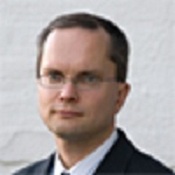

Abstract
Currently, industry and academics seeks to understand when specific cooperation approaches
perform best, how the performance of cooperative techniques degrades under practical assumptions,
and which gains remain if cooperation is integrated into a full wireless system.
At the moment, these open questions are a major roadblock in standardization and system
design. To bring cooperative communications into practice, this tutorial provides
researchers with the background and tools to answer these questions.
Contributions This tutorial bridges the gap between analyzing and prototyping cooperative
communication. Based on recent advances in information-theoretical models and
metrics, we will discuss how closely analytically predicted gains are achieved by current
prototypes. In particular, we will (i) introduce theoretical tools to assess the performance
of ideal cooperative networks even under realistic constraints, (ii) identify critical system
functions that largely affect cooperative gains, and (iii) describe how these functions can
be modeled and implemented such that the benefit of cooperation remains even in realistic
scenarios.
Finally, we provide an extensive survey on current testbeds for cooperative networks.
We describe prototypes from industry and academics in detail and study how closely the
presented theoretical methods capture experimental results. To our audience, this tutorial
not only provides the theoretical background and tools to critically assess the real-life
performance of upcoming cooperative networks but also summarizes starting points and
open issues to implement these.


Both authors have published widely in the field of cooperative communication, won the
ACM SIMUTools best paper award in 2008, and have a remarkable experience in testbed development.
Since 2005, Stefan supervised five academic and industrial prototyping projects
as well as extensive field tests for cooperative relaying systems and holds several patents
in this field. Hermann, has three years experience in prototyping cooperative relaying on
Software-defined Radios (SDRs) and on off-the-shelf WLAN adapters. In 2008, both authors
demonstrated the world's first cooperative WLAN prototype that reached full IEEE
802.11a/g rates.
Abstract
This tutorial on latest advances in future networking architectures is designed for
researchers, engineers and managers involved in future networking product strategies.
Networking research funding agencies in USA, Europe, Japan, and other countries are
encouraging research on revolutionary architectures that may or may not be bound by the
restrictions of the current TCP/IP based Internet. We present an overview of a number of
such research projects and activities in this direction. The topics covered include: Clean-
Slate Research Programs, Internet 3.0, Virtualization, ID-Locator Separation, Content
Centric Networking, OpenFlow, and Delay-tolerant networks.
This tutorial provides an overview of research related to future networks including those
funded under NSF FIND/GENI in the US, FP7 in Europe and NWGN program in Japan.
Engineers, managers, and academic personnel, who want to keep track of the latest
developments in networking will find the information useful.
Networking researchers all over the world are busy developing new architectures and test
beds. There is significant interest in the industry and military on these developments

Abstract
Recent innovations in energy-harvesting, low-power electronics, backscatter communications, and RFID now indicate the possibility of wireless communications at UHF and microwave frequencies with devices that have little or no on-board power supply. In this tutorial, we outline new techniques that dramatically extend both the range and the potential data rate of these types of communications links using multiple antennas, new and bizarre forms of modulation, unconventional radio elements. These techniques will soon allow the exchange of low data rates over surprisingly far distances (hundreds of meters for purely passive devices), with profound implications in the world of sensors, radio location, and consumer electronic devices.
This tutorial will demonstrate how simple, energy-scavenging integrated circuits can be used to conduct radio communications with small, battery-less devices. By harvesting energy from incident RF waves or other hybrid sources, we demonstrate unique forms and techniques for wireless communications. We will discuss first-principles operation of these low-powered communications links, with real-life case studies that include the Intel WISP platform as well as 5.8 GHz high-voltage sensors for realizing "Smart Grid" applications. The tutorial is targeted for a bachelor-level communications engineer and is an excellent introduction to the emerging field of microwave energy-harvesting radios and wireless sensors.
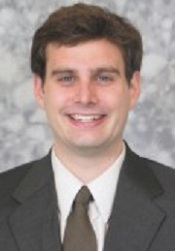
Abstract
IMT-Advanced is justly identified as realizing substantial performance gains over previous generation of wireless
networks. By October 2010, the ITU-R will decide on the framework and key characteristics by which the IMTAdvanced
candidates will be judged and, accordingly, recognized as satisfying ITU's requirements. With this in
mind, it is natural to contemplate on the future of wireless broadband beyond IMT-Advanced. The objective of this
tutorial is hence to provide a sober and cautious projection of how wireless broadband will progress over the next
ten years. This projection is based on a mindful scan of current trends and advances at several operational levels
(interface, networking and services) and in different directions (market and regulatory). In order to facilitate this
projection, we offer a primer on IMT-Advanced candidate technologies, namely 3GPP's LTE-Advanced and IEEE's
802.16m. In doing so, the tutorial will establish the general motivation and identify the enabling technologies for
IMT-Advanced networks. It will then offer a detailed description of each technology, taking a functionality-based
view of their individual operation that facilitates a meaningful comparison between the technologies. We will then
build on this primer to elaborate on the considerations dictating the vision for wireless broadband in 2020.
The mode of the tutorial will be to motivate broadband wireless technologies, with various emphases on the
applicability for the various sectors . both existing and emerging. The scope and depth of discussion will be aimed
at both researchers (both academic and industrial), in addition to practitioners in the field. To achieve this, we touch
on particular advances that have been taking place in the standardization, industrial practices and recently published
findings. The tutorial will also be prepared for an international audience, updating on projects carried out in different
parts of the globe and in different settings (urban, sub-urban, rural, etc.). Significant space will thus be provided for
factors of economy, regulation, environment, in addition to social impact.
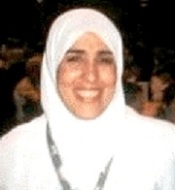
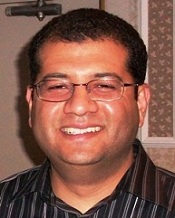

Abstract
Modern society depends on telecommunications in order to enable a diverse range of activities, such as financial transactions, public safety, education, and social networking. To achieve ubiquitous and robust last-mile access, many applications require some form of wireless transmission to connect the end-users with the rest of the network. However, several serious issues are beginning to emerge given society's growing dependence on wireless access. For instance, although the demand for wireless access based on the number of users and applications is rising steadily, the amount of freely-available electromagnetic spectrum is rather limited and may not satisfy this need. Furthermore, new complex wireless networking architectures are becoming increasingly difficult to realize using conventional radio technology. Consequently, cognitive radio has been proposed as a viable solution to these issues.
A cognitive radio is a type of wireless networking system that combines autonomous device operating parameter reconfigurability, real-time situational awareness of the radio/network/system environment, and artificial intelligence-driven decision-making for achieving the "best possible" parameter selection. This is all made possible by employing microprocessor technology at the core of a cognitive radio system in order to perform baseband digital signal processing and digital communication operations.
In this half-day tutorial, the instructors will present how overlay wireless transmission techniques based on digital communications and digital signal processing concepts and fundamentals can be employed in conjunction with cognitive radio techniques in order to achieve greater spectral efficiency as well as enable better wireless transmission performance by the communication system via software-defined radio (SDR)-based optimization. Specifically, this tutorial will cover the following topics in order to give the tutorial attendees insight onto this important area:
- Historic aspects of wireless communications and a brief overview of electromagnetic.
- Understanding and characterizing of wireless spectrum occupancy and spectrum scarcity.
- Overlay transmission techniques for opportunistic, non-contiguous wireless access.
- Genetic algorithm-based optimization approaches for overlay transmission approaches.
This tutorial is timely since several nations are seeking to extensively expand their telecommunications infrastructure, and opportunistic wireless access is widely considered to be a suitable candidate technique for enabling greater and more efficient access to national wireless resources. This tutorial is aimed at the telecommunications generalist who would like to know more about the increasingly important area in wireless communications, as well as graduate students who are entering this exciting field of research.

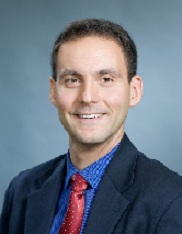
Abstract
OCDMA has unique advantages over TDMA and WDM such as asynchronous
"tell-and-go" multiple access capability, soft-capacity on-demand, low-latency access
due to all-optical en/decoding, and data confidentiality. Researches and standardization
activities of Next-Generation (NG) passive optical network (PON) have been underway,
which will upgrade beyond 10G-PON existing commercial Fiber-To-The-Home
(FTTH) systems. NG-PON1 aims at an evolutional growth of gigabit-PON. Next,
NG-PON2 will bring a revolution change and is planned to be standardized by 2015.
NG-PON2 includes several technology candidates such as 40/100G TDMA, DWDMA,
OCDMA, and OFDMA. In this tutorial, at first a migration scenario of PON systems
from existing 10G-PON to NG-PON1, followed by NG-PON2 will be discussed. Next,
10 Gigabit-symmetric OCDMA will be introduced. This up/down link
bandwidth-symmetry will be a "must," enabling peer-to-peer applications of
high-definition contents. A focus is on a special class of OCDMA, coherent OCDMA
systems. Recent progress in enabling technologies such as novel PON architectures, the
optical en/decoding techniques and their devices, and the dispersion-compensation-free
long-reach 100km transmission. Then, a variety of hybrid OCDMA systems such as
TDM-OCDMA, WDM-OCDMA will be compared in their system costs, scalability,
and upgradability. Finally, for an enhancement of data confidentiality against malicious
attacks a novel block-ciphering based high-security M-ary OCDM, having M count up
to 4096, will also be presented.
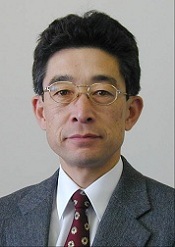
Abstract
In mobile tactical ad hoc networks, nodes are constantly in motion and/or operate on limited
power. When nodes are in motion, links can be obstructed by intervening objects. When
nodes must conserve power, links are shut down. These result in intermittent connectivity.
When no path exists between source and destination, network partition occurs. Examples of
an intermittently connected network (ICN) are: a). An inter-planet satellite communication
network where satellites and ground nodes may only communicate with each other several
times a day, b). A sensor network where sensors are not powerful enough to send data to a
collecting server or are scheduled to be wake/sleep periodically, c). A military ad hoc network
where nodes (e.g. tanks, airplanes, soldiers) may move randomly and are subject to being
destroyed. Applications in ICNs must tolerate delays beyond conventional IP forwarding
delays and these networks are referred to as delay/disruption tolerant networks (DTN). New
protocols specifically for DTNs must be developed as existing protocols designed for the
Internet do not work properly.
Applications in DTNs include
Recently there has been much research activity in the emerging area of intermittently
connected ad hoc networks and delay/disruption tolerant networks (DTN) (DARPA launched
one in 2005). There are different types of DTNs depending on the nature of the network
environment. Routing in DTNs is one of the key components in the DTN architecture
proposed by the DTN research group. Therefore, researchers have proposed different routing
protocols for different types of DTNs in the last few years. In this tutorial, we review the
state of the art in DTN networks, especially routing protocols. We categorize these routing
protocols based on information used. For deterministic time evolving networks, three main
approaches are discussed: the tree approach, the space and time approach, and the modified
shortest path approach. For stochastic time evolving networks, the following approaches are
reviewed: the epidemic or random forwarding approach, predication or history based
approach (including per contact routing based on one-hop information only and per contact
routing based on average end to end information), the model based routing approach as well
Zhang, DTN overview Page 3 of 5
as approaches which control the movement of certain special nodes. Recent developments in
erasure coding and network coding applied to DTNs are also discussed.
DTN technology also offers a new solution to highly stressed communications in space
environments, especially those with long link delay and frequent link disruptions in deep
space missions. DTN for space is becoming a recognized research area. We discuss the
emerging DTN protocols for space communications with focuses on DTN architecture, BP,
convergence layer protocols and their application in space. An overview of recent research
and experimental activities on DTN over simulation testbed and in space, both low-Earth orbit
and deep space, is also presented. The tutorial also identifies open research issues and intends
to motivate new research and development in this area.
Even though the research in DTNs is in its early stage, there are already many architecture
and routing protocols proposed. It is high time to organize all into different categories, to
compare them in terms of resource used and network efficiency and identify open research
issues in this area. Our intention is that, by reviewing these layer-agnostic protocols in details
and categorizing them into different classes, efficient algorithms and new improvements can
be developed.
By finishing this tutorial, the attendee should be able to describe what a DTN is, what the
applications in DTN are, what the main research challenges in DTNs are, what kind of routing
protocols have already been proposed and what the open research issues in DTNs are.
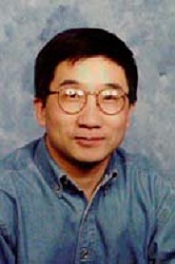
Dr. Zhang serves as the IEEE Globecom 2012 TPC Chair.
